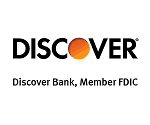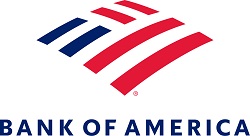When it comes to banks, something is comforting about being able to walk into a physical branch and talk to a human being.
Online banks may offer higher interest rates, but there’s no one to go to. Community banks and credit unions may offer more perks, but they don’t have the national footprint. You can’t walk into a branch if you’re not near home.
National banks may not get as much love as others on the internet but they still play a crucial role.
If you’re wondering about which national bank to go with, we will share with you the best national banks in the United States so you can find the best one for you.
Table of Contents
- How We Established Our List
- Chase Bank – Best For New Customers
- Discover Bank – Best for Cash Back
- Bank of America – Best For College Students
- CIT Bank – Best for Good Rates
- Ally Bank – Best Online Bank
- Truist Bank – Best for Basic Accounts
- Barclays – Best For Savings
- Citi® – Best For Large Balance Transfers
- PNC Bank – Best Checking/Savings Package
- Capital One – Best Customer Service
- TD Bank – Best Checking Benefits
- US Bank – Best for Low Fees
- Wells Fargo – Best In-Person Banking
- Frequently Asked Questions
- Final Thoughts
How We Established Our List
First, we only chose banks that are open to any eligible adult in the United States or considered a National Bank by the FDIC. Our goal was to find the best national banks with a huge geographic reach so you can always get access to a branch or ATM if you need one.
For size rankings, we rely on the FDIC Bank Find tool to list the number of locations plus we use the National Information Center’s list of the “largest” banks in the United States by assets. This was last reported on June 30th, 2022.
We used the J.D. Power Satisfaction scores as a proxy for customer satisfaction. Not all the banks on our list were scored in the same category. The “online banks”, like Ally Bank and Discover Bank, were put into the “Direct Banking” category. Other banks with brick-and-mortar locations were assessed in both a “retail” and a “business” category, so we went with retail satisfaction. Then within each category, they assessed a score for checking and then savings accounts.
It’s a bit complicated but we went with the most accurate figure in each category. So while you can’t pit them head to head, it does give a relative sense of their customer satisfaction.
Finally, we consider the interest rates and other benefits, such as a bank bonus, in our listing. The best national banks tended to compete heavily on bonuses so many do offer a few hundred dollars. We did not consider any credit unions for this list. For rates, we looked at their checking, savings, and 12-month CD rates.
After that, the list below is not meant to be in a ranking order – it is simply a list with all the information provided to decide for yourself.
Chase Bank – Best For New Customers

JPMorgan Chase Bank is one of the largest and safest banks in the U.S., with 4,825 domestic locations in 49 states, according to the FDIC (FDIC Cert #628). It’s also the largest in terms of assets and market cap, but the reason we list it first is that in addition to all that – Chase Bank offers big bonuses for new checking and savings accounts.
Big is great but for you, the customer, a big bonus is more important. 😊
Chase will waive the $12 monthly fee on their Total Checking account if you set up a recurring direct deposit of $500 or more each month. They have an excellent lineup of checking accounts for students from ages six through 24, not to mention branch locations in nearly every U.S. state.
Chase Savings accounts are fee-free when you keep a minimum balance, set up an auto-transfer, or tie the savings account to a Chase checking account to use for overdraft protection purposes.
Chase was the largest by assets with $3.8 trillion.
👉 Go to Chase Bank to learn more
| Chase Bank Snapshot | |
|---|---|
| Checking Account Interest Rate (source) | 0.00% APY |
| Savings Account Interest Rate | 0.01% APY |
| 11-Month CD Rate | 0.02% APY |
| Branches | 4,825 |
| ATMs | 16,000 ATMs |
| 2022 J.D. Power Retail Banking Satisfaction Score | 858 (second) |

Discover Bank – Best for Cash Back
Discover® Bank is most well known for its line of credit cards but they also have an online bank by the same name. Interestingly enough, Discover Bank has two locations according to the FDIC (FDIC Cert #5649) but only one of them, in Sussex, DE, is a full-service branch.
Its online checking account offers no minimum balance or activity requirements, no fees, and pays 1% cash back on debit card purchases of up to $3,000 per month (they are not currently accepting applications for the cashback debit card but when it’s available, it’s awesome). Plus you pay nothing for standard checks, cashier’s checks or insufficient funds fees with the Discover checking account.
For savings, there is no fee and no minimum deposit. Plus, it pays an interest rate that’s among the highest in the nation (3.75% APY).
Promotions: Discover Bank does have a $150/$200 deposit promotion that does not require a direct deposit.
👉 Go to Discover Bank to learn more
| Discover Bank Snapshot | |
|---|---|
| Checking Account Interest Rate | |
| Savings Account Interest Rate | 3.75% APY |
| 12-Month CD Rate | 4.00% APY |
| Branches | 1 |
| ATMs | 415,000 ATMs (incl. Allpoint & MoneypPass Networks) |
| 2022 J.D. Power Direct Banking Satisfaction Score | 715 (2nd highest) |
Bank of America – Best For College Students

I have a Bank of America account because I lived around the corner from a branch at my first house. A lot of people live around a physical branch as they have 3,859 domestic locations in 38 states, according to the FDIC (FDIC Cert #3510). While they don’t have a presence in all fifty states, they do offer thousands of ATMs across the country.
Bank of America has several different types of checking and savings options, depending on how much cash you intend to keep at the bank, but the three main ones are:
- Bank of America Advantage SafeBalance Banking® – $25 minimum opening deposit, $4.95 monthly fee. See the offer page for ways to waive the monthly fee.
- Bank of America Advantage Plus Banking® – $100 minimum opening deposit, $12 monthly fee. See the offer page for ways to waive the monthly fee.
- Bank of America Advantage Relationship Banking® – $100 minimum opening deposit, $25 monthly fee. See the offer page for ways to waive the monthly fee.
Interest rates on Bank of America’s checking and savings accounts are low, as is the case for most larger national banks, but worth noting.
Member FDIC.
Promotions: Bank of America does offer a new account promotion.
Bank of America is the second largest in terms of assets with $3.1 trillion.
👉 Go to Bank of America to learn more
| Bank of America Snapshot | |
|---|---|
| Checking Account Interest Rate (source) | 0.00% APY |
| Savings Account Interest Rate | 0.01% APY |
| 11-Month CD Rate | 0.05% APY |
| Branches | 3,859 |
| ATMs | 16,000 ATMs |
| 2022 J.D. Power Retail Banking Satisfaction Score | 852 (third) |
CIT Bank – Best for Good Rates

In January 2022, CIT Bank merged with First-Citizens Bank & Trust Company and now operates under the First-Citizens Bank & Trust Company’s charter (FDIC Cert #11063). Their old certificate (#35575) was retired. If you looked at the First Citizens information, you’d see over 500 bank branches but that’s for First Citizens and not the CIT Bank “division.”
CIT Bank doesn’t have any bank branches nor does it have an ATM network. If you were to go to a First Citizens branch, you can’t access your CIT Bank. The only thing the two worlds share is FDIC insurance coverage.
CIT Bank does offer ATM reimbursement of up to $30 at the end of every monthly statement period.
👉 Go to CIT Bank to learn more
| CIT Bank Snapshot | |
|---|---|
| Checking Account Interest Rate | 0.25% APY |
| Savings Account Interest Rate | 1.00% APY |
| 10-Month CD Rate | 0.30% APY |
| Branches | 1 |
| ATMs | 16,000 ATMs |
| 2022 J.D. Power Retail Banking Satisfaction Score | 852 (third) |
Ally Bank – Best Online Bank

Ally Bank is my main online bank because it has a good app, great interest rates, and has been easy to work with. I like online banks because they’ve made a lot of banking services very convenient through the app – I believe they’ve also accelerated the adoption of those technologies by traditional brick-and-mortar banks.
In 2009, GMAC Bank rebranded to Ally Bank and they have a single “domestic location,” according to the FDIC (FDIC Cert #57803), which is their headquarters in Salt Lake, UT. They’ve partnered with the Allpoint ATM network so you get access to 43,000 ATMs plus Ally Bank will reimburse you $10 in out-of-network ATM fees per statement period.
Ally Bank offers checking, savings, and money market accounts with no minimum balance requirement and no monthly fees. What’s great is that Ally Bank pays interest on all accounts, regardless of your balance, and the rates are competitive with many high-yield savings accounts.
For more information, check out our Ally Bank review.
Promotions: We are not aware of any active promotions right now, our Ally Bank promotions page will be updated to include any.
👉 Go to Ally Bank to learn more
| Ally Bank Snapshot | |
|---|---|
| Checking Account Interest Rate | 0.10% APY |
| Savings Account Interest Rate | 3.80% APY |
| 12-Month CD Rate | 3.90% APY |
| Branches | 0 |
| ATMs | 43,000 (Allpoint Network) |
| 2022 J.D. Power Direct Banking Satisfaction Score | 709 (third) |
Truist Bank – Best for Basic Accounts
Truist Bank is the product of a merger between BB&T (Branch Banking and Trust Company) and SunTrust Bank back in 2019. According to the FDIC, Truist Bank now operates 2,125 branches across 18 states under FDIC Cert# 9846. Truist Bank operates mostly in the mid-Atlantic and Southeast regions of the US plus a big presence in the state of Texas.
Truist’s checking account is called Truist One Checking. There is a $50 minimum opening deposit and the perks of the account depend on your total monthly average balance. With the lowest tier, you can get a Truist One Savings account with no maintenance free, 10 free checks, and a $100 negative balance buffer. At the highest, with $100,000+, you get free check re-orders, maintenance fees waived unlimited ATM reimbursements and a few other perks.
The Truist One Savings account has a $50 minimum opening deposit and a $5 fee unless you keep a balance of $300 or more (there are a few other ways to get it waived).
For “size,” Truist Bank is ninth in terms of assets with $545 billion.
Promotions: Truist Bank promotions are generally good, the current one is $400 with a direct deposit requirement.
| Truist Bank Snapshot | |
|---|---|
| Checking Account Interest Rate | 0.00% APY |
| Savings Account Interest Rate (source) | 0.01% APY |
| 12-Month CD Rate (source) | 3.50% APY |
| Branches | 2,125 |
| ATMs | 3,000 |
| 2022 J.D. Power Retail Banking Satisfaction Score | 801 |
Barclays – Best For Savings

Barclays is primarily a high-yield online savings account plus certificates of deposit – no checking account product is available. They are FDIC-insured Cert #57203 with one branch in Delaware, which is technically a full-service brick-and-mortar location and their main office.
Since it is only a savings account (and CDs), there’s no ATM access. To use Barclays, you have to link up separate accounts to transfer funds in and out.
For “size,” it’s 26th in terms of assets. No accurate market cap because it’s the online arm of the much larger international bank Barclays.
We include Barclays because they offer some of the highest interest rates for the products they do offer.
👉 Go to Barclays to learn more
| Barclays Bank Snapshot | |
|---|---|
| Checking Account Interest Rate | N/A |
| Savings Account Interest Rate (source) | up to 4.50% APY (with minimum balance requirements) |
| 12-Month CD Rate | 4.00% APY |
| Branches | 1 |
| ATMs | 0 |
| 2022 J.D. Power Direct Banking Satisfaction Score | Not Included |
Citi® – Best For Large Balance Transfers

Citi® is a well-known national bank but they tend to have branches concentrated in the more densely populated states – like New York, California, Florida, and Illinois. According to the FDIC (FDIC Cert #7213), Citibank has close to a thousand branches (almost 700 in the United States).
Citi® has four banking packages that can accommodate nearly any financial situation. Each checking account has free partner savings account if you meet the checking account requirements.
For example, the Access checking account is free when you make either one qualifying Direct Deposit or one bill-pay transaction each period.
The Basic checking account has fee waivers, too, including waivers for having a minor as a joint owner or a senior (62 and above) as a primary owner.
Other available checking accounts offer additional benefits and have steeper requirements for waiving the monthly fee. The bonus with Citi is that it currently pays the highest savings rate you can find from a large bank but take note of the fees on each account.
For “size,” Citi is third in terms of assets with $2.3 trillion.
Promotions: Citi offers some big dollar promotions if you have sizable deposits to transfer to a new account.
| Citi Snapshot | |
|---|---|
| Checking Account Interest Rate | 0.00% APY |
| Savings Account Interest Rate (source) | 0.05% APY – 1.01% APY |
| 12-Month CD Rate | 3.00% APY |
| Branches | 674 |
| ATMs | 60,000+ (Cirrus, Maestro & Mastercard Network) |
| 2022 J.D. Power Direct Banking Satisfaction Score | 840 (fourth) |
PNC Bank – Best Checking/Savings Package
PNC Bank was the first brick-and-mortar bank account I ever opened when I moved to Pittsburgh for college. I didn’t know just how big it was but according to the FDIC, they have 2,608 branches across 29 states (FDIC Cert #6384).
PNC Bank’s Virtual Wallet is their combination Checking and Savings product. There is no minimum deposit to open the checking side, known as the Spend Account, but it does have a $7 fee unless you have a $500+ monthly direct deposit, or $500+ balance in Spend + Reserve Accounts (the savings portion), or are over 62.
The interest rates paid on the account are low but the low minimums make it an acceptable checking and savings account when you want a larger geographic presence.
For “size,” PNC Bank comes in 10th in assets with $541 billion.
Promotions: PNC Bank offers cash bonus promotions for new accounts.
| PNC Bank Snapshot | |
|---|---|
| Checking Account Interest Rate | 0.01% APY |
| Savings Account Interest Rate (source) | 0.02% APY |
| 12-Month CD Rate | 0.01% APY |
| Branches | 2,608 |
| ATMs | 60,000+ (includes AllPoint Network) |
| 2022 J.D. Power Direct Banking Satisfaction Score | 834 |
Capital One – Best Customer Service
Capital One is another bank that is most well known for its credit cards, and credit card commercials, but its banking offerings are quite popular as well. According to the FDIC (FDIC Cert #4297), Capital One has nearly 300 domestic locations across 9 states. They tend to be concentrated in the mid-Atlantic region, Texas and Louisiana, and New York.
They also operate a series of Capital One Cafes where they offer a more personalized banking experience. They frequently offer various speaker events, mentoring, and other familiar “coffeehouse” perks like wifi and charging stations.
All of the accounts come with a $0 minimum balance and no monthly fees. Checking and savings accounts pay some of the higher interest rates in the nation for both adults and kids.
And kids as young as eight can open a Teen Money account as long as the account lists a parent or guardian as a joint account holder.
Note that the adult joint account holder isn’t required to have a separate Capital One bank account.
You can transfer money from your current bank into your child’s Teen MONEY account.
For “size,” it’s 13th in terms of assets with $440 billion.
| Capital One Snapshot | |
|---|---|
| Checking Account Interest Rate | 0.10% APY |
| Savings Account Interest Rate (source) | 3.70% APY |
| 12-Month CD Rate | 4.00% APY |
| Branches | 298 |
| ATMs | 70,000+ (includes AllPoint and MoneyPass Networks) |
| 2022 J.D. Power Direct Banking Satisfaction Score | 875 (second) |
TD Bank – Best Checking Benefits
TD Bank has 1,167 branches spread across 16 states (FDIC Cert #18409), primarily on the east coast of the United States (minus Georgia) with a heavy concentration in the northeast.
TD Bank offers two checking products:
- TD Convenience Checking with a $100 minimum to avoid a fee, discounted first checks
- TD Beyond Checking with a $2500 minimum balance to avoid a fee, no ATM fees, and the free first order of checks
They also offer two savings accounts – TD Beyond Savings and TD Simple Savings. Both of these have monthly fees but you can avoid them with a minimum balance ($300 for Simple Savings) or by linking a checking account.
For “size,” TD Bank is 11th in terms of assets with $516 billion.
Promotions: TD Bank runs bank promotions on both their checking and savings, with separate bonuses for each (that add up to quite large sums).
| TD Bank Snapshot | |
|---|---|
| Checking Account Interest Rate | 0.00% APY |
| Savings Account Interest Rate (source) | 0.25% APY |
| 12-Month CD Rate (source) | 3.75% APY |
| Branches | 1,167 |
| ATMs | 2,600 |
| 2022 J.D. Power Direct Banking Satisfaction Score | 836 |
US Bank – Best for Low Fees
US Bank, also known as U.S. Bancorp, has an impressive 2,241 branches in 28 states (FDIC Cert #6548).
Their checking product is the Bank Smartly Checking™ account, which requires only $25 to open. You can avoid the $6.95 maintenance fee when you meet minimum account balance requirements ($1500) or direct deposits totaling $1,000 or more.
They also offer three savings accounts:
- Bank Smartly® Savings Account – $25 minimum to open, $5 fee you can get waived if you have a Bank Smartly® Checking or Safe Debit account or for accounts with a minor under the age of 18.;
- Elite Money Market Account – $100 minimum to open, $10 fee you can get waived if you maintain a $10,000 minimum daily balance.
US Bank has better than average certificates of deposit. Two products stand out:
- Step Up CD – a CD that gets an interest rate increase every seven months through a 28-month term (though the current interest rate is not great)
- Trade up CD – A CD where you can increase the interest rate if a higher rate occurs during the term (once, but again, the rate is meh right now)
For “size,” U.S. Bancorp is eighth in assets with $591 billion.
Promotions: They offer a bonus of up to $450 on their U.S. Bank Smartly™ Checking, you can learn more about U.S. Bank bonuses on this post.
👉 Go to U.S. Bank to learn more
| Wells Fargo Snapshot | |
|---|---|
| Checking Account Interest Rate | 0.00% APY |
| Savings Account Interest Rate (source) | 0.01% APY |
| 12-Month CD Rate | 0.05% APY |
| Branches | 2,241 |
| ATMs | 4,700 (includes MoneyPass Network) |
| 2022 J.D. Power Direct Banking Satisfaction Score | 819 |
Wells Fargo – Best In-Person Banking
Founded in 1929, Wells Fargo is one of the most well-known national banks in the U.S. Wells Fargo has 4,735 branches in 40 states (FDIC Cert #3511), making it one of the largest banks on this list by the number of branches.
The company offers various checking and savings account options for any budget. They even provide a teen checking account for teens as young as 13.
And if you need it, Wells Fargo also has available wealth management services.
One downside to Wells Fargo is that most checking accounts don’t pay interest. And, the ones that do have pretty non-existent rates.
Wells Fargo comes in fourth in assets with $591 billion.
Promotions: While they don’t pay interest, Wells Fargo does offer new account promotional offers.
👉 Go to Wells Fargo to learn more
| Wells Fargo Snapshot | |
|---|---|
| Checking Account Interest Rate | 0.00% APY |
| Savings Account Interest Rate (source) | 0.15% APY |
| 12-Month CD Rate | 0.30% APY |
| Branches | 4,735 |
| ATMs | 12,000+ |
| 2022 J.D. Power Direct Banking Satisfaction Score | 837 |
Frequently Asked Questions
Here are answers to some common questions people ask about national banks:
The answer to that depends on what you need in a bank. If you tend to stay local, you can probably get away with banking locally. However, you’ll want to ensure your local bank has free access to an abundance of national ATMs. Conversely, if you often travel – whether for work or pleasure–you may be interested in banking at a national bank. National banks often have more features–including branch locations–that you can access around the country.
Again, that depends on your personal needs. If you primarily live, work, and play in and around the area in which you live, a local bank should accommodate your needs just fine. However, if you spend a fair amount of time in other states, you may prefer a national bank with countrywide locations. Some may argue that national banks can offer better features and interest rates because of their larger size. And they’re probably right to some extent. However, banking at a local bank comes with the benefit of knowing your banker personally and gaining some benefits from that relationship.
As long as your local bank is FDIC insured, it should be just as safe as a national bank. That said, you should keep informed of the operations and earnings for your bank no matter where you bank. That way, you can spot any trouble (such as mismanagement) early on. Another point to consider is that a nationally located bank might better handle any internal fraud that may occur because they’ve got a more significant net worth.
When searching for the best national bank for you, check out the types of accounts each bank offers. Then check out the features and benefits of those accounts. Think about making a list of which banking benefits are most important to you. Choose the national bank that best fits your banking needs.
Final Thoughts
The best national banks offer a variety of great features for their customers.
As you decide which national bank you should use, know that you’ve got several options. Before you settle on a specific bank, I recommend that you pay attention to account options, fees, ATM availability, and other features that may be important to you
Then choose the bank that best fits most or all of your financial needs.
And remember – you can change your bank!



